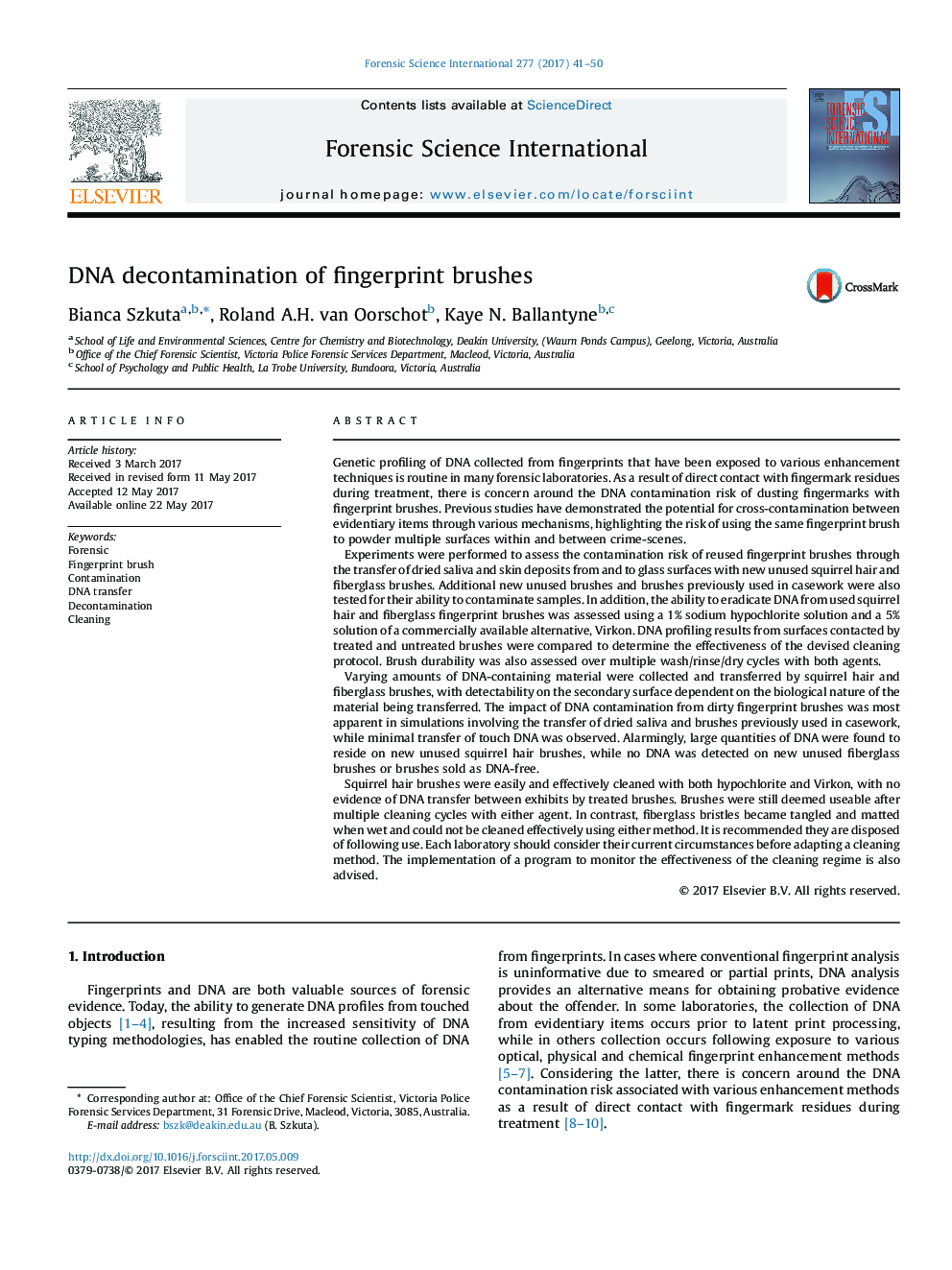| کد مقاله | کد نشریه | سال انتشار | مقاله انگلیسی | نسخه تمام متن |
|---|---|---|---|---|
| 4760250 | 1421973 | 2017 | 10 صفحه PDF | دانلود رایگان |

- Fingerprint brushes are vectors for the transfer of DNA between surfaces.
- The biological nature of the material being transferred influenced detectability.
- DNA was detected on the bristles of new unused squirrel hair brushes.
- Squirrel hair brushes were effectively cleaned with solutions of hypochlorite and Virkon.
- Fiberglass bristles became matted when wet and could not be cleaned effectively.
Genetic profiling of DNA collected from fingerprints that have been exposed to various enhancement techniques is routine in many forensic laboratories. As a result of direct contact with fingermark residues during treatment, there is concern around the DNA contamination risk of dusting fingermarks with fingerprint brushes. Previous studies have demonstrated the potential for cross-contamination between evidentiary items through various mechanisms, highlighting the risk of using the same fingerprint brush to powder multiple surfaces within and between crime-scenes.Experiments were performed to assess the contamination risk of reused fingerprint brushes through the transfer of dried saliva and skin deposits from and to glass surfaces with new unused squirrel hair and fiberglass brushes. Additional new unused brushes and brushes previously used in casework were also tested for their ability to contaminate samples. In addition, the ability to eradicate DNA from used squirrel hair and fiberglass fingerprint brushes was assessed using a 1% sodium hypochlorite solution and a 5% solution of a commercially available alternative, Virkon. DNA profiling results from surfaces contacted by treated and untreated brushes were compared to determine the effectiveness of the devised cleaning protocol. Brush durability was also assessed over multiple wash/rinse/dry cycles with both agents.Varying amounts of DNA-containing material were collected and transferred by squirrel hair and fiberglass brushes, with detectability on the secondary surface dependent on the biological nature of the material being transferred. The impact of DNA contamination from dirty fingerprint brushes was most apparent in simulations involving the transfer of dried saliva and brushes previously used in casework, while minimal transfer of touch DNA was observed. Alarmingly, large quantities of DNA were found to reside on new unused squirrel hair brushes, while no DNA was detected on new unused fiberglass brushes or brushes sold as DNA-free.Squirrel hair brushes were easily and effectively cleaned with both hypochlorite and Virkon, with no evidence of DNA transfer between exhibits by treated brushes. Brushes were still deemed useable after multiple cleaning cycles with either agent. In contrast, fiberglass bristles became tangled and matted when wet and could not be cleaned effectively using either method. It is recommended they are disposed of following use. Each laboratory should consider their current circumstances before adapting a cleaning method. The implementation of a program to monitor the effectiveness of the cleaning regime is also advised.
Journal: Forensic Science International - Volume 277, August 2017, Pages 41-50